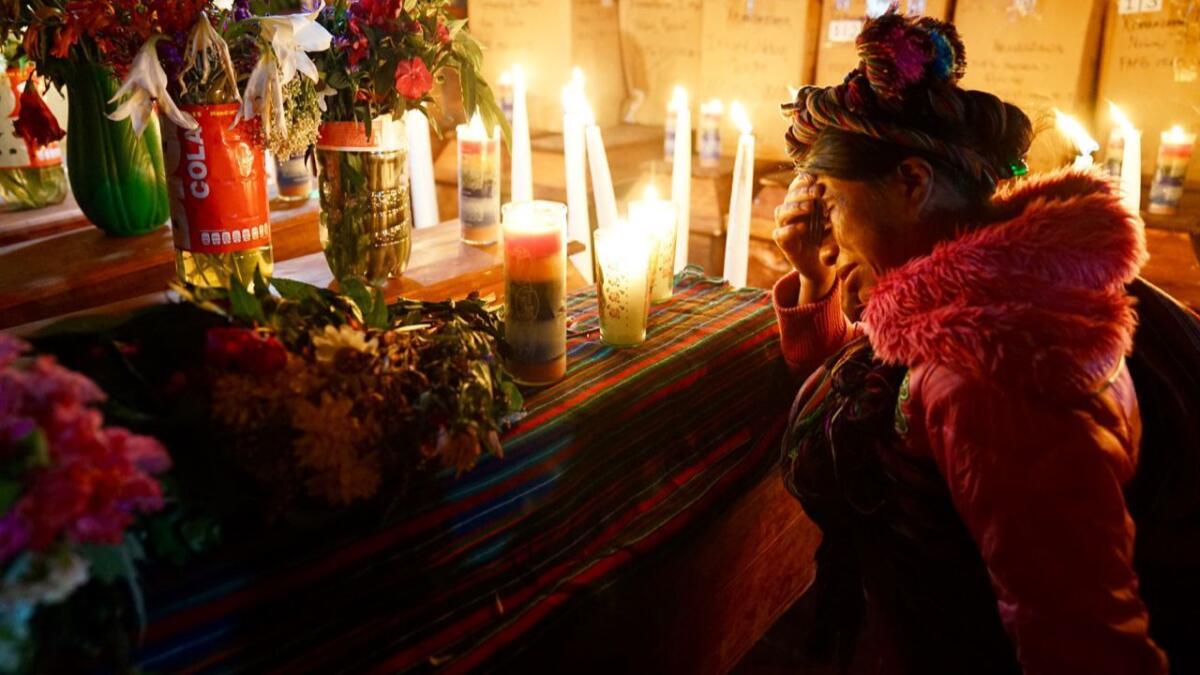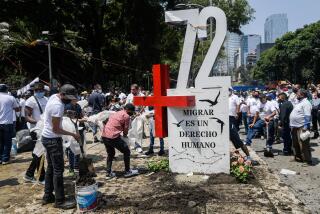Guatemala’s civil war devastated the country’s indigenous Maya communities

Reporting from Ixtupil, Guatemala — During the 1980s, as much of Central America became a bloody Cold War battleground, the conflict in Guatemala stood out as exceptionally sinister.
The ruling military junta viewed the highland Indians — descendants of the Mayas — as natural allies of the Marxist guerrillas fighting to overthrow it.
Security forces launched a massive counterinsurgency against selected populations, especially the Ixil ethnic enclave here in Quiche province.
A report by a United Nations-backed truth commission after the 36-year civil war formally ended in 1996 found that security forces had inflicted “multiple acts of savagery” and genocide against Maya communities.
The campaign included: bombing villages and attacking fleeing residents; impaling victims; burning people alive; severing limbs; throwing children into pits filled with bodies and killing them; disemboweling civilians and slashing open the wombs of pregnant women.
“The massacres, scored-earth operations, forced disappearances and executions of Mayan authorities, leaders and spiritual guides were not only an attempt to destroy the social base of the guerrillas, but above all, to destroy the cultural values that ensured cohesion and collective action in Mayan communities,” the Commission for Historical Clarification said.
The Guatemalan government was responsible for more than 90% of deaths, disappearances and other human rights violations during the war, the commission said. The state deliberately exaggerated a limited insurgent threat to justify large-scale repression, the commission found.
At least 200,000 people died in the civil war, the commission said.
In 2013, former dictator Gen. Efrain Rios Montt was convicted of genocide and crimes against humanity for the deaths of at least 1,771 Ixil people during his rule from 1982 to 1983. He was sentenced to 80 years in prison in a case that was widely hailed as a landmark, the first time that a former head of state faced formal genocide charges in his own nation.
But less than two weeks later, Guatemala’s highest court overturned the conviction on technical grounds.
Years before Rios Montt came to power, U.S. President Carter had banned military aid to Guatemala because of the country’s dismal human rights record. It was a controversial measure at a time when left-wing insurgencies threatened U.S.-backed governments in Nicaragua and El Salvador. Guatemala had long been viewed as an anti-communist bastion.
Indeed, a CIA-backed coup in 1954 had toppled the government of leftist Guatemalan President Jacobo Arbenz, who championed a signature land reform, redistributing large estates to peasants.
Rios Montt, a charismatic evangelical preacher, was the head of a three-man junta that seized power in Guatemala in March 1982.
His admirers included President Reagan, who declared after meeting him in 1982 — as the military was conducting its brutal onslaught against Maya communities — that the junta boss exhibited “great personal integrity” and had gotten a “bum rap.”
The Reagan administration lifted the embargo on arms sales to Guatemala in 1983, allowing the country to obtain equipment and parts for helicopters and fixed-wing aircraft, among other items, for its counterinsurgency efforts.
The truth commission found that U.S. military assistance to Guatemala had a “significant bearing on human rights violations during the armed confrontation.”
In 1999, President Clinton formally apologized for Washington’s backing of right-wing governments in Guatemala.
“Support for military forces and intelligence units which engaged in violence and widespread repression was wrong, and the United States must not repeat that mistake,” he said.
Rios Montt, 91, reportedly suffering from a weak heart and dementia, was being retried for genocide when he died on April 1.
Twitter: @PmcdonnellLAT
More to Read
Sign up for Essential California
The most important California stories and recommendations in your inbox every morning.
You may occasionally receive promotional content from the Los Angeles Times.









